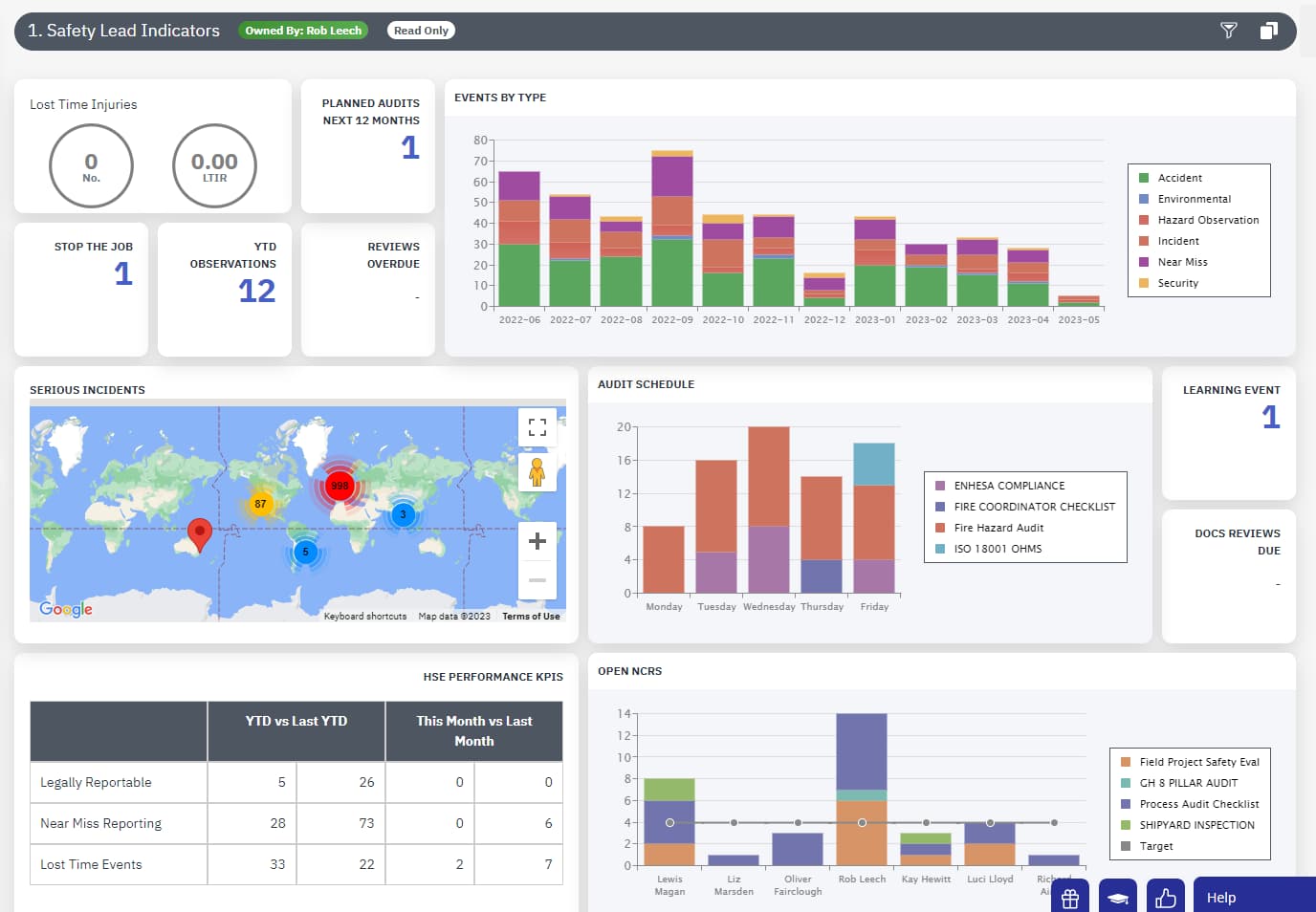
Safety Audit Meaning & Definition
What is a Safety Audit?
A safety audit is widely regarded as an important tool for businesses operating in different industries. Any company, whether it’s a logistics center, a manufacturing concern, or a storage facility can benefit from safety audits.
A safety audit is a comprehensive process which includes different activities through which businesses collect information about the company’s overall safety culture and protocols. It helps companies identify how companies prioritize safety, both for its workers and the environment.
A safety audit also helps companies determine the effectiveness of the safety and occupational health standards they have in place. The audit helps companies evaluate the effectiveness of these measures and figure out whether risk control measures are working properly.
Safety audits are generally conducted by safety consultants. These consultants carefully review work processes, procedures and policies in place, as well as any safety management systems to draw an opinion on the effectiveness of the company’s safety controls.
Is incident reporting the key to culture change?
Get this 17-page guide discussing how reporting incidents, close calls and observations can help transform your safety culture.
The Importance of Conducting a Safety Audit
Safety audits are quite important, especially for companies that work with harmful chemicals or processes that may pose a risk to human health.
It may include a detailed walkthrough of the manufacturing facility, the machinery in place, the procedures, interviews with employees and the management, as well as a thorough review of any data collected by the company.
Safety audits are important for several reasons. For starters, they help ensure that the company is in compliance with safety legislation. Failure to comply with safety legislation may result in fines and penalties, such as losing a manufacturing license.
Companies often conduct audits, either internal or external, to ensure that they are in compliance with the latest safety legislation in place. This helps ensure that the company takes worker safety seriously.
More importantly, a safety audit can also help businesses identify any weaknesses within their safety program. This helps create a more robust safety environment within the company. Companies can use these audits as a guide to take steps and ensure that they improve safety in the workplace.
The Main Objectives of a Safety Audit
When conducting a safety audit, companies often have specific objectives. In most cases, these are as follows.
Ensure that Employees are Following Safety Protocols
By reviewing processes, safety auditors can determine whether employees are following the guidelines as specified in the company’s safety program.
If they are not, it speaks to the company’s safety culture, and the business may have to take steps to ensure that employees carefully follow the safety guidelines and take occupational health and safety seriously.
Improve Safety in the Workplace
The most important objective of a safety audit is to improve safety standards in the workplace by mitigating hazards. A safety audit helps companies identify any new hazards and specify controls to mitigate risks.
More importantly, audits can also help businesses identify just how well controls are working for already-identified hazards. This helps improve safety in the workplace overall and helps reduce the risk of any major accidents or incidents.
Following Industry Safe Practices
Another reason why safety audits are important is because they help companies ensure that the equipment they’re using, the facilities in place, and the operations they conduct all follow safety best practices.
If there have been significant updates to safety standards, the company may want to consider upgrading its protocols and implement new procedures and policies.
Ensure Accurate Record-Keeping
A number of companies are required to keep accurate records of any safety incidents or accidents. A safety audit can help companies determine if their records are accurate, or anything was missed.
How to Plan a Safety Audit
There are a number of different steps involved in a safety audit, primarily because it’s quite thorough when compared with a conventional technical inspection.
Planning the Audit
The first step is to plan the audit. This involves working with the auditors to identify the scope of the audit, the processes to be carried out, and any particular areas that may require more attention.
Conducting the Audit
During this stage, the auditors conduct their tests. They carry out substantive tests as well as other tests of controls to determine the effectiveness of safety controls and procedures.
This step may involve observing procedures, interviewing employees or management, or checking safety controls themselves.
Preparing the Report
The audit team then prepares a report outlining all of their findings, including any violations, lapses in safety controls, or differences when compared with the industry best practices.
Recommendations
Once the audit is completed, the audit team then refers to its findings and prepares a list of recommendations. These corrective recommendations are presented before the managers and supervisors, who are directly responsible for making sure that they’re implemented.
In most cases, a completion date is added and a date for further review to determine if the actions were implemented, and whether they are working properly.
Publishing the Report
The final step involves publishing the safety audit report, which is generally made available to all employees within the company. In some cases, external stakeholders, such as government entities, may also be given a copy.
Improve Workplace Safety with EcoOnline’s Health & Safety Software
EcoOnline’s Health & Safety Software is designed to help companies identify industry best practices when dealing with harmful substances, introduce safety protocols and carefully record any incidents or accidents.
It’s an excellent solution for businesses that want to improve workplace safety while also recording any major or minor safety incidents.




